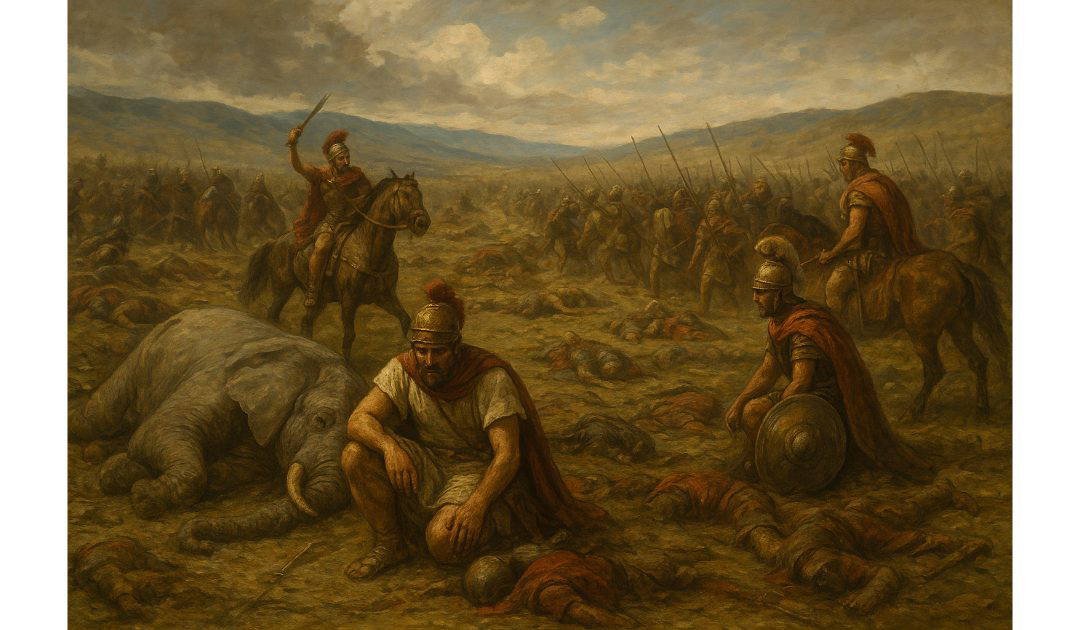It’s hard to choose the subject of today’s blog. As a writer I am tempted by the publication of Jayne Eyre in 1847. Russia is hardly ever out of the news, and today marks the Treaty of Drottningholm between Sweden and Russia in 1791 and Napoleon’s retreat from Moscow in 1812. But I’m going to go for Hannibal, since on the 19th of October, 202 BCE, Hannibal was defeated at the Battle of Zama by Roman legions under the command of Scipio Africanus.Hannibal Barca, born in 247 BCE in Carthage (present-day Tunisia), is hailed as one of history’s greatest military commanders. There is a useful link. Tunis features as a location in early scenes of The Suggested Assassin, the third book in the Sir Anthony Standen Adventures. A formidable strategist, Hannibal’s campaigns against Rome during the Second Punic War (218–201 BCE) etched his name into the annals of military history.
Early Life and Background
Hannibal was the son of Hamilcar Barca, a distinguished Carthaginian general who played a significant role in the First Punic War. Growing up in a military environment, Hannibal was introduced to warfare and leadership at an early age. Legend holds that Hamilcar made young Hannibal swear an oath of eternal hostility towards Rome, an oath that would shape his destiny.The Barca family belonged to Carthage’s elite, and Hamilcar’s campaigns in Iberia (modern Spain and Portugal) laid the groundwork for Carthage’s influence there. After Hamilcar’s death, Hannibal’s brother-in-law, Hasdrubal the Fair, took command, and upon his assassination in 221 BCE, the army unanimously elected Hannibal, then in his mid-20s, as their leader.
The March to War
Hannibal’s ambition soon became apparent. Determined to challenge Rome’s supremacy, he initiated the Second Punic War by attacking Saguntum, a city under Rome’s protection. Rome declared war in response, unaware that Hannibal had orchestrated a plan unparalleled in military history.In 218 BCE, Hannibal embarked on his audacious journey to Italy. He led an army of approximately 90,000 infantry, 12,000 cavalry, and 37 war elephants from Iberia, crossing the formidable Pyrenees, through Gaul, and over the treacherous Alps. The Alpine crossing remains one of his most celebrated feats, fraught with natural obstacles, hostile tribes, and severe weather. Despite heavy losses—nearly half his men and most elephants—Hannibal’s army emerged into northern Italy, surprising the Romans.
Battles and Triumphs
Hannibal’s tactical genius shone in a series of battles that followed. At the Battle of Trebia (218 BCE), he used cunning tactics to lure the Romans into a trap, securing a decisive victory. The following year, at Lake Trasimene, Hannibal orchestrated one of history’s largest ambushes, annihilating a Roman army and killing the consul Gaius Flaminius.Rome, shaken by these defeats, appointed Quintus Fabius Maximus as dictator. Fabius adopted a strategy of attrition, avoiding direct confrontation—earning the nickname “Cunctator” (the Delayer). Frustrated yet undeterred, Hannibal continued ravaging Italy, hoping to break Rome’s alliances, but the city’s resilience endured.Hannibal’s crowning achievement came in 216 BCE at the Battle of Cannae. Facing a Roman force nearly twice the size of his own, Hannibal executed a double-envelopment manoeuvre, encircling and decimating the Roman army. Cannae remains a masterclass in battlefield tactics, studied by military leaders to this day.
The Turning Tide
Despite his victories, Hannibal faced challenges. Rome refused to negotiate, adapting its military strategies. Hannibal’s inability to secure reinforcements from Carthage further strained his campaign. Meanwhile, Rome launched counteroffensives in Iberia and North Africa, shifting the war’s momentum.In 204 BCE, the Roman general Scipio Africanus invaded North Africa, forcing Hannibal to return home. The decisive Battle of Zama in 202 BCE marked Hannibal’s first major defeat. Scipio’s tactics, including the effective use of cavalry and knowledge of Hannibal’s strategies, secured Rome’s victory. Carthage was forced into a humiliating peace treaty, ending the Second Punic War.
Later Life and Legacy
After the war, Hannibal entered Carthaginian politics, implementing reforms to curb corruption and restore the city’s prosperity. However, his popularity threatened Carthage’s elite and Rome, leading to political pressure that forced him into exile around 195 BCE. Hannibal sought refuge in various eastern Mediterranean courts, offering his military expertise to Rome’s rivals, including the Seleucid king Antiochus III. Even in exile, Rome pursued him relentlessly. To avoid capture, Hannibal took his own life in 183 BCE, reportedly using poison. Hannibal’s legacy transcends his lifetime. Roman historians like Livy and Polybius, despite their biases, acknowledged his brilliance. His strategies influenced military leaders such as Napoleon Bonaparte and even modern tacticians. The phrase “Hannibal ad portas” (Hannibal is at the gates) became a Roman expression signifying imminent danger.

